Ask Texas Tree Surgeons: What’s Wrong with My Chinese Pistache? [UPDATED]

Dear Texas Tree Surgeons,
My Chinese pistaches are looking terrible! The leaves are yellowing, the berries are black, and it looks like it’s dying. What’s going on?

Extensive dieback on a Chinese pistache
-A.B.
For many years, the Chinese pistache (Pistacia chinensis) has been well-regarded as a landscape shade tree for urban environments in Texas. Although native to China, this species of pistache (related to the nut-bearing pistachio tree) can thrive in a variety of conditions. The Chinese pistache is a fast grower and is resistant to heat, drought, and alkaline soil, all common in North Texas. Like the native red oak, the Chinese pistache is a reliable source of fall color. The dark red berries that female Chinese pistaches produce are not only striking, but can attract birds and other wildlife. For many builders and landscapers, the Chinese pistache is a go-to choice.

If a tree’s leaves are showing spotting or uneven color change, it can be a sign of a problem.
This year, however, we have been seeing unprecedented dieback and wilting of leaves and berries in Chinese pistaches. Entire trees are exhibiting leaf spotting and extensive browning. Similar to the browning present in Italian cypresses the past two years, it seems that the Chinese pistache dieback is caused by a fungus. And much like the Italian cypress issues, there may not be much that can be done at this point.
Water, Water Everywhere
Recent wet weather, combined with poor drainage in clay soils, creates a “wet feet” situation in trees, where their roots are inundated with too much moisture. Trees that are not suited to wet soils are not able to regulate the high moisture level in their roots effectively. The roots then become susceptible to pests, especially fungi, which thrive in damp, poorly-drained soil. As the tree root tissue becomes waterlogged, the fungi are able to gain a foothold in the roots and begin infecting the tree internally. Eventually, the tree’s vascular system itself becomes the mechanism by which the fungal spores are spread throughout the branches, leaves, and fruit. The fungus disrupts cell function in the above-ground parts of the tree, just as it did in the roots.

Infected berries will rapidly change from red to black
What Can We Do About It?
Unfortunately, there is often little that can be done to improve overall drainage in clay soil. Still, there are some things that tree owners can do to give their trees the best chance:
- Select native species that are well-adjusted to the North Texas climate
- When planting, do not plant too deep, and follow good mulching practices
- For established trees, do not overplant the area near the root collar and inside the drip line with turf grass or other groundcover
- Consider root collar excavation (Airspading) for trees that were planted too deep
- Vertical mulching and soil aeration can help break up heavy clay and compacted ground
- Stop watering and turn off sprinkler systems during periods of heavy rain
Sometimes, despite best practices, fungal infections cannot be avoided. At the first signs of leaf spotting, or unseasonal browning or wilting, contact a certified arborist to diagnose any issues with your trees. Your arborist can suggest a plant health care program. Fungicidal treatments can be helpful, but must be timed appropriately. Once a tree shows extensive browning or dieback, it is often too late for fungicides to be effective.
If It’s Too Late…
If your trees are covered in dead berries and have dropped a lot of leaves already, it is unlikely that a fungicide would have much effect. The best thing to do would be to remove any diseased material from the tree, do as much as you can to improve drainage, and begin a fertilization program. With a good winter freeze, the fungus should die off. In the spring, reevaluate the tree for early signs of new or lingering fungal activity, and treat as appropriate.
At Texas Tree Surgeons, we love trees, and we hate to see a new problem arise that affects a common and much-relied-upon tree like the Chinese pistache. We have submitted samples to the Texas Plant Disease Diagnostic Lab and are awaiting the results. With proper identification, we may be able to better control the particular fungus in the future. We will be sure to let you know what we find out. Keep an eye on our Facebook page for updates!
—-
We received our results from Texas A&M. The samples we submitted from one Chinese pistache specimen showed evidence of both Phytophthera root rot and Anthracnose stress.
Phytophthera is a pathogen that causes damage to root tissue which can lead to the death of a tree. Phytophthera’s activity is enhanced by wet soil conditions and poor drainage. While fungicidal treatments can be applied, they will be of little benefit unless the underlying moisture and drainage issues are corrected.
Anthracnose is cause by a fungal pathogen, and can take advantage of plants that are already weakened by other stressors. The best method of managing anthracnose is to clean up and dispose of any fallen infected leaves or berries. Fungal sprays may be applied, but are generally not recommended during late summer or autumn, as the trees are preparing to go dormant for the winter, and the fungus should decline naturally.
—-
As always, please let us know if you have any tree questions. We are always happy to have a certified arborist come out and take a look a small issue to hopefully stop it from becoming a big problem!
Related Blogs
Similar blogs related to this topic


How Does Summer Weather Affect Oak Tree Health in Dallas-Fort Worth?
As we transition out of Oak Wilt season we are now in the thick of extreme heat and long days in full sun. Summers in Dallas-Fort Worth can be quite intense with soaring temperatures and…
Read more


